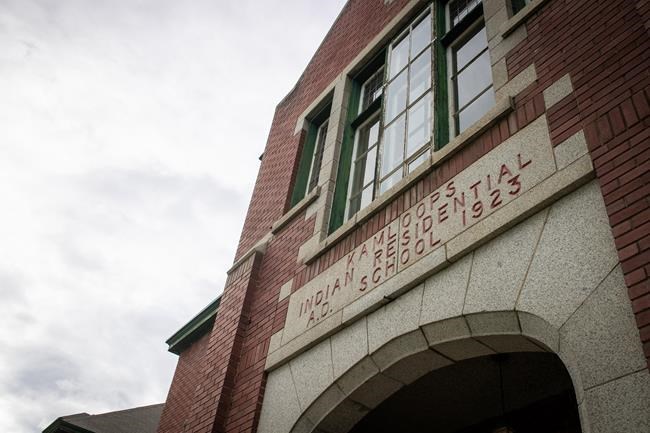I grew up outside Kamloops. Any time we drove to town I could look across the railroad tracks, across the South Thompson River, and see the residential school — in plain sight, but as distant as the moon.
It had closed as a school by the time I hit my teens, but was still in use as a residence for Indigenous kids from places like Pavilion and Deadman Creek. They went to my junior high, filing out of their yellow bus at the same time I filed out of mine.
One was the granddaughter of a friend of my mother. When my mother heard the girl was coming to the school, she asked me to watch out for her, but the girl was so painfully shy and withdrawn that we didn’t really connect, not that I made much of an effort. I generally gave the Indigenous kids a wide berth because there always seemed to be eight of them together, looking about 80 times tougher than I was. I never stopped to think that the reason they hung together was that they were outnumbered 10 to one every time they got off that bus.
Were there rumours of abuse, of children buried on the residential school grounds? Not that I heard, though I don’t know where I would have heard them, such was the disconnect from one side of the river to the other.
And that disconnect — not in Kamloops, but across Canada — continues. Even the genuine outpouring of grief we have seen in the past few days, the orange shirts and the lowered flags and social media expressions of rage, reflects that. Over the past decade, it has been widely reported that at least 4,000 children died at Canada’s residential schools, but for many that didn’t hit home until what had been a number on a page became real in Kamloops. By contrast, consider what MLA Adam Olsen, who belongs to the Tsartlip First Nation, told the legislature Monday: “For Indigenous people, this story is not shocking, nor is it unimaginable.”
That children had died at the Kamloops residential school was already known. In 2013, a front page Kamloops Daily News story said at least 36 children had perished there between 1914 and 1963, though “the Tk’emlups band believes the actual number could be three to four times greater.”
The figure came via research associated with the Truth and Reconciliation Commission. “By and large, disease was certainly the primary cause of death,” the woman leading the research was quoted as saying. She cited tuberculosis and meningitis as two leading causes.
“The conditions in the schools were such that kids would sometimes come in sick and if they were healthy, it wasn’t too long before they were exposed to other kids.”
The same story quoted a band official as discounting rumours of a burial ground under a recreation area by the school.
The location of the graves did not appear to have been widely known.
It is known now, though, and in consequence social media is full of denunciations of the evil of the people and churches of the past. That’s a conveniently narrow target in that it frees us of the need to examine our actions today. The churches that ran the residential schools didn’t act in isolation; they were the instruments of a broader society that firmly believed that assimilation was in the best interests of Indigenous people, that they would otherwise be shut out of the modern world and left behind. Self-righteous paternalism, as opposed to malevolence, though the result was the same.
Look no further than a 1961 Kamloops Sentinel story about a residential school priest moderating “a panel discussion by the social welfare workers, members of the other professions and clergy who work on the reserves on the integration of local Indians into the white man’s world.” From the tone of the story, these were the progressives of their day.
That should be one of the great lessons, that being well-intentioned shouldn’t be confused with doing the right thing. There were plenty of monsters at work within the residential schools, but to dismiss what happened to those 215 children as being solely the product of evil is to absolve ourselves of the need to examine our unintentional, unrecognized sins today. Don’t think paternalism doesn’t continue; just look at the logging and pipeline debates, in which those on either side cherry-pick the Indigenous voices they deem legitimate, and discount the others.
And don’t think that despite our declaration that “every child matters,” entrenched inequities don’t remain. Today’s grief, no matter how deeply felt, won’t change that on its own. Back in my junior high, when an Indigenous friend from a rural band said he wanted to be an attorney, I couldn’t see how he would ever get that opportunity. Would it be any different today? I hope so.
I also wish I had, just once, while driving on a road paved with good intentions, asked him what it was like to live in that building across the river, the one with the 215 children buried outside.



